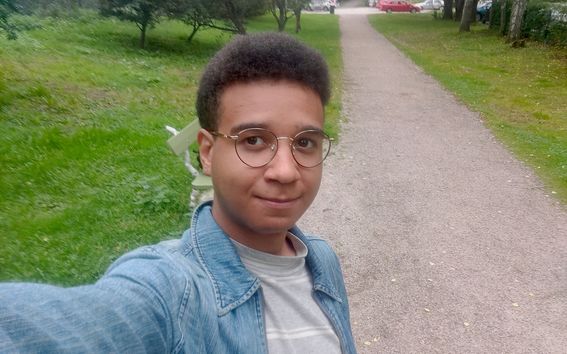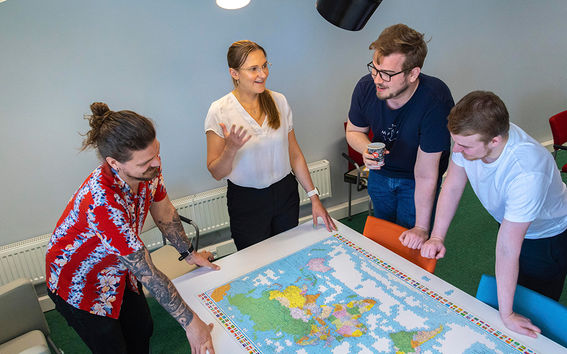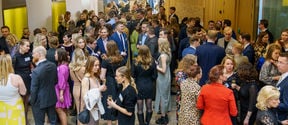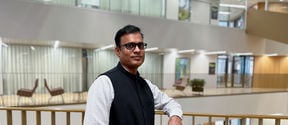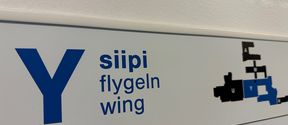During high school / lukio, my interest in city and environmental planning arose. I especially wanted to study something that would allow me to take part in developing the solutions that would make our lives more sustainable. I ended up doing my bachelor’s degree in the old energy and environmental technology (energia- ja ympäristötekniikka) programme in Aalto, which offered a look into a myriad of approaches towards a green future.
I was unfamiliar with geoinformatics before a course in my first year introduced me to tools such as QGIS, and I was shocked to realize how spatial data was used in the background of every single topic I had studied. After an introduction to programming trough the introductory Python course and liking, I choose computer science as my minor, and I wanted to use these skills together with my knowledge on environmental studies. After a summer job as a spatial data trainee for the city of Kuopio, it was clear to me that I would choose the master’s Programme in Geoinformatics (GIS) as my path going forward.
While geoinformatics is often thought of as the software to create maps or vaguely “spatial analysis”, in our GIS programme students are given a thorough look into the creation, collection, management, and understanding of various types of spatial data. Because both the software and hardware GIS experts use are always evolving, the focus of the programme is on understanding the fundamentals and knowing how to keep learning even after finishing the programme, because what may have been state-of-the-art this year may not be that the next year. Students and alumni from our programme know how to stay on top of technological developments and get to apply their skills even in industries I’m not familiar with. They say the sky is the limit, but not for my peers who work with satellites!
My favorite course so far has been “Spatial Data Science for Sustainable Development”, where a group assignment had us identify a problem where geospatial data analysis could be used to solve it. Our group analyzed noise pollution data in Finnish cities, finding how many people lived under constant noise, and for example which roads should have better noise protection to reduce noise levels for a large number of people. The course had us use our skills in spatial analytics and Python programming as well as our interests in sustainable development to keep us engaged throughout the course.
During my first year of master’s studies, I have one or two lectures on most days of the week, and there’s a lot of time left for doing practical work and independent studies, often with course mates. I’ve also been working part-time as research assistant in the Research Institute of Measuring and Modeling for the Built Environment (MeMo). In the Circular Green Blocks project our team’s goals has been to improve 3D spatial data’s use in smaller scale, such as yard-size green development.
My work is quite flexible in terms of when I spend time on it, and has included working on reports, creating data conversion workflows, and familiarizing myself with research which could have application potential for our projects. Some of the office spaces are in the same building as my lectures, so combining work and studies has been easy. On some days I’ll work in the morning, and then go to lectures after lunch, sometimes the other way round. During periods of more coursework, I was able to work less and vice versa.
A fun way to get to know more students and employers in the field is to join the events or even the board of Poligoni, the geoinformatics student association in Aalto! I have been the chairperson of the board for 2023, and we’ve had fun organizing events for our members in the form of company excursions, sauna nights and other activities. I also was a tutor for master’s students new to Aalto in the autumn semester of 2022.
My hope is to serve as a GIS expert or specialist in a company that focuses on environmental planning, city planning, or both. While working as a research assistant I’ve been learning how to bridge the gap in understanding between experts of spatial data and those who know almost nothing about it. I hope to find ways to continue to bring the benefits of state-of-the-art spatial data and its collection to urban planning and development projects.
For students who are just starting their GIS studies, I’d recommend considering quite early on what interests you in addition to geoinformatics. Spatial data alone is fascinating, but it often in the real world it is the application of GIS tools that needs to be done. Combining GIS expertise with your other interests, for example sustainable energy resources, gives you a unique worldview for studies and a sought-after skillset in working life! Don’t be afraid to ask for help and get to know your fellow students, and you may very well have your own GIS expert support network for the rest of your career.
